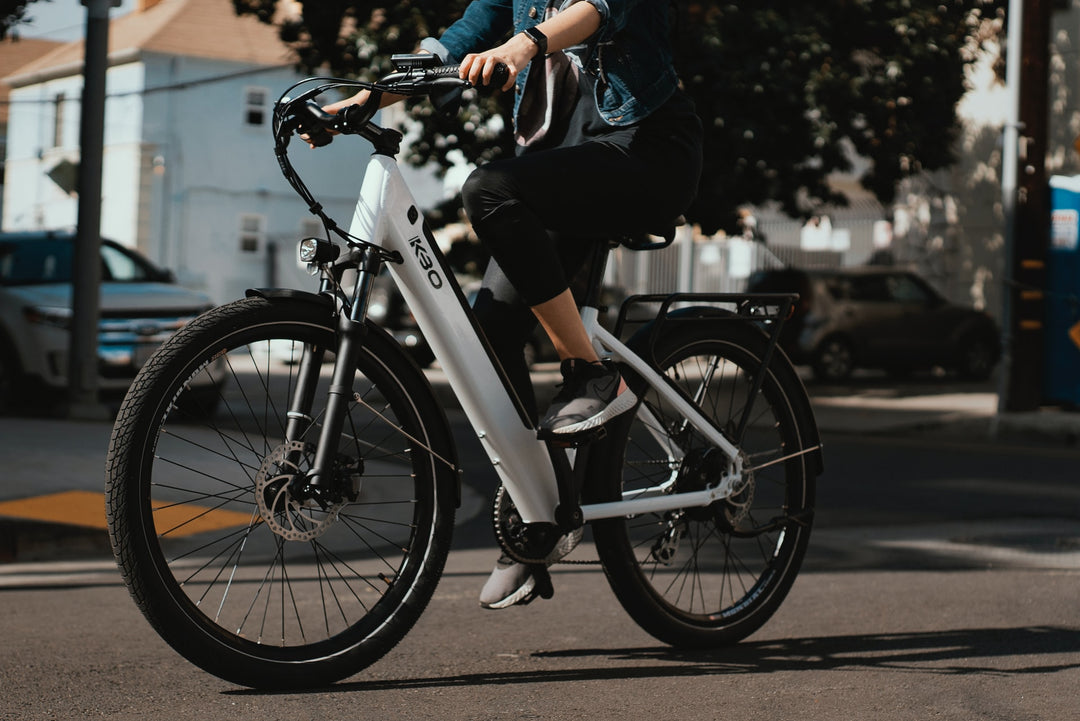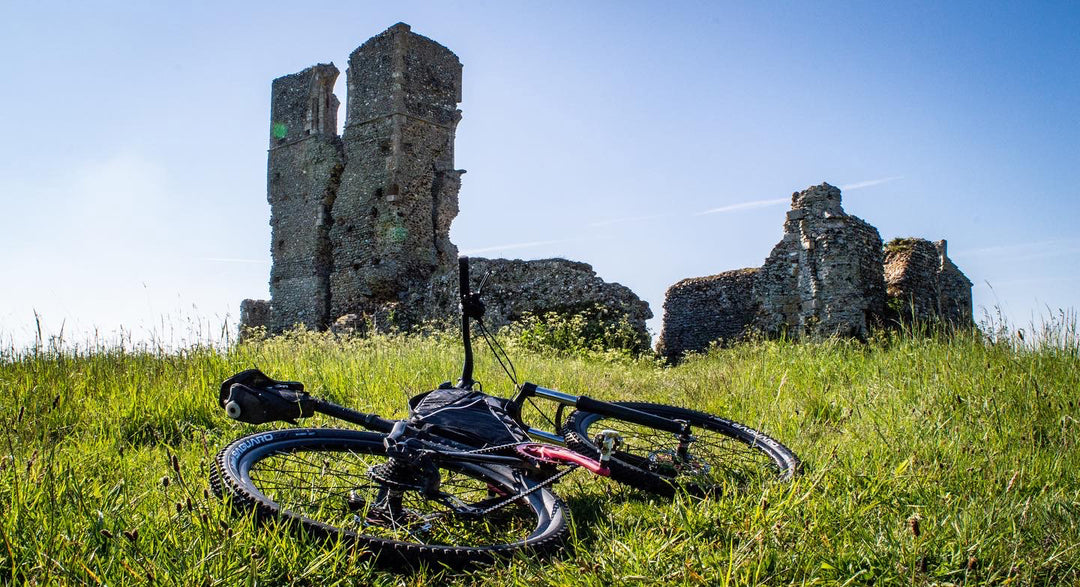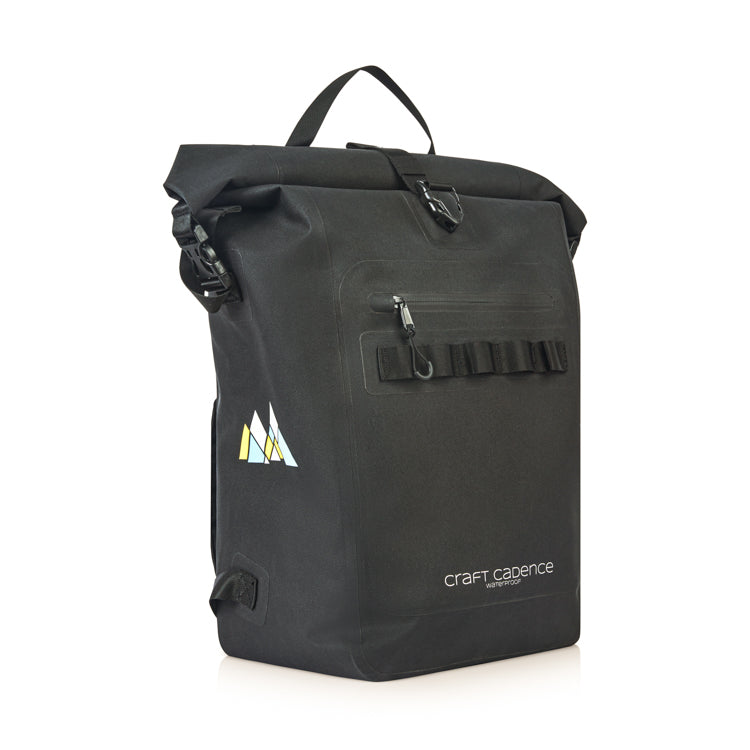A beginner's guide to bicycles for commuting
It used to be easy to pick a bicycle for your commute; chose a road bike for roads, or a mountain bike if you had some off road trails. Now though, walk into a bicycle shop and you are faced with a plethora of bicycle types and a whole load of differing opinions. This guide takes you through the main ‘types’ of bicycles, their merits and their flaws.
Importantly, we highlight what you can expect and look out in your for your budget. Plus there are some links to further reading for each bicycle type
Road bicycles are designed to be ridden fast on smooth pavement. They have thin tyres, light frames and drop handlebars. The position is more aerodynamic than other types of bicycle, allowing the rider to reach higher speeds. They tend to start at a higher price and are popular among experienced cyclists and enthusiasts who follow the pro racing circuit.
- Generally the lightest type of bike, meaning it could be the easiest, fastest option.
- Great for road cycling, so suited to a road commute.
- Fun to ride (makes you feel like a pro racer).
- Racing bikes are unlikely to have eyelets on the frame making it hard to install mudguards and pannier rack. Not good if you want to take heavy loads.
- Head down riding position is not suited to busy urban environments.
- Terrible to cycle on any off road routes, even light gravel paths.
- Uncomfortable ride, with no suspension and thin tyres.
£200-500 – aluminium frame and aluminium forks, but often equipped with entry level components and own brand wheels / tyres.
£500-1000 – Aluminium frame and carbon forks. racing bikes are all about lightness, and above 500 you will see a lighter bicycle with better wheels/tyres
£1000+ – very high end bike, carbon frame and forks. But as you pay more, the differences in weight start to get less. More gears, and electronic gear changing.
Mountain bikes are designed for riding rough off-road trails. They have flat or upright handlebars, and a very low gear range for pedalling up steep trails. Most mountain bikes have some type of shock absorbers or suspension. Mountain bikes with front suspension only are called hardtails; mountain bikes with both front and rear suspension are called full-suspension.
- Very comfy ride with suspension and large tyres
- Great upright cycling position suited for busy urban environments
-usually have eyelets for pannier rack and mudguards
- suitable for all surfaces.
- Heavy, and thus slower and more work cycling
- Slow on roads
- Expensive to replace suspension
£200-500 – aluminium hardtail, with less gears and heavier parts. V-brakes or Mechanical disc
£500-1000 – aluminium hardtail or full suspension, more gears and lighter parts. Hydraulic disc brakes
£1000+ – Full suspension with light parts, which are designed to take heavy rough down hilling. Carbon frames available in this price range
Hybrid Bicycles were originally conceived to provide the advantages of both road bikes and mountain bikes; the upright handlebars and frame of a mountain bike, with the faster lighter wheels and tyres of a road bike. Nowadays hybrid bikes vary in styles but this remains at the heart of the design.
- Versatile, jack of all trades...they can be ridden on roads and trails.
- Have eylets for pannier racks and mudguards
- Great upright riding position suitable for urban environments
- Does not perform as well as road bikes on flat surfaces, and mountain bikes on off road surfaces
£200-500 – steel or aluminium frame , but often equipped with entry level components and own brand wheels / tyres. V-brake or mechanical disc brake
£500-1000 – aluminium frame with carbon forks . lighter components. More gears and hydraulic disc brakes
£1000+ – carbon forks and seat post light weight components such as lighter wheels and gear parts. Hydraulic disc brakes.
Folding bicycles are ideal for those who need to travel with their bike, want a bike only part of the journey ( use train or bus ) or have storage limitations at home. boat or plane, or who live in small apartments and don't have a lot of storage space or no safe place to lock it at work. Most folding bikes have smaller wheels, which makes the bike a little less efficient and trickier to handle.
- Can be taken with you, almost anywhere
- No need to worry about locking up as you can take it inside
- Allows multimodal journeys and freedom and flexibility
- Smaller wheels mean they are uncomfortable
- Heavier and slower that normal bicycles
- can have issues with folding mechanism
£200-500 – heavier components and slower bicycle and harder to fold away. Mechanical gears
£500-1000 – lighter components, more gears and better folding mechanism. Hub gears
£1000+ - Very small and easy to transport. Hub gears.
Cyclocross bicycles are a special type of road bike designed to be ridden on mixed surfaces. They have a drop handlebar like regular road bikes, but the tires are a littler wider for more off-road traction.
- Versatility as they are suitable for all surfaces and roads
- Have eyelets so they can take racks and mudguards
- Comparatively expensive to other types.
- Head down riding position is not suited to urban busy environments.
£200-500 – basic frame, with entry level components. Cantilever or v brakes
£500-1000 – lighter components, more gears and disc mechanical or hydraulic disc brakes
£1000+ - lighter components.
Singlespeed bicycles are like road or hybrid bicycles, however they only have one gear, hence the name. Ideal for flat roads, fans of vintage/trendy cycles and those who do not want to invest heavily in the latest gear or to maintain the bicycle regularly.
- Low maintenance, with no gears to go wrong.
- They are cool, with a lot of street credentials.
- Comparatively cheaper.
- Light, as they have no gear components, so easy to move and carry
- very bad for hilly locations.
- Not very versatile, and only suitable for flat roads
- Uncomfortable ride.
£200-500 – good frame, with entry level wheels. With no gears, singlespeeds
£500-1000 – lighter components, with main difference being better wheel set
£1000+ - rare to find a single speed over £1000
Cover Photo by halfrain / CC BY
Importantly, we highlight what you can expect and look out in your for your budget. Plus there are some links to further reading for each bicycle type
Road bikes
Road bicycles are designed to be ridden fast on smooth pavement. They have thin tyres, light frames and drop handlebars. The position is more aerodynamic than other types of bicycle, allowing the rider to reach higher speeds. They tend to start at a higher price and are popular among experienced cyclists and enthusiasts who follow the pro racing circuit.
 Photo by philHendley / CC BY
Photo by philHendley / CC BY
Pros
- Generally the lightest type of bike, meaning it could be the easiest, fastest option.
- Great for road cycling, so suited to a road commute.
- Fun to ride (makes you feel like a pro racer).
Cons
- Racing bikes are unlikely to have eyelets on the frame making it hard to install mudguards and pannier rack. Not good if you want to take heavy loads.
- Head down riding position is not suited to busy urban environments.
- Terrible to cycle on any off road routes, even light gravel paths.
- Uncomfortable ride, with no suspension and thin tyres.
Price
£200-500 – aluminium frame and aluminium forks, but often equipped with entry level components and own brand wheels / tyres.
£500-1000 – Aluminium frame and carbon forks. racing bikes are all about lightness, and above 500 you will see a lighter bicycle with better wheels/tyres
£1000+ – very high end bike, carbon frame and forks. But as you pay more, the differences in weight start to get less. More gears, and electronic gear changing.
Mountain bikes
Mountain bikes are designed for riding rough off-road trails. They have flat or upright handlebars, and a very low gear range for pedalling up steep trails. Most mountain bikes have some type of shock absorbers or suspension. Mountain bikes with front suspension only are called hardtails; mountain bikes with both front and rear suspension are called full-suspension.
 Photo by Leon Wilson / CC BY
Photo by Leon Wilson / CC BY
Pros
- Very comfy ride with suspension and large tyres
- Great upright cycling position suited for busy urban environments
-usually have eyelets for pannier rack and mudguards
- suitable for all surfaces.
Cons
- Heavy, and thus slower and more work cycling
- Slow on roads
- Expensive to replace suspension
Price
£200-500 – aluminium hardtail, with less gears and heavier parts. V-brakes or Mechanical disc
£500-1000 – aluminium hardtail or full suspension, more gears and lighter parts. Hydraulic disc brakes
£1000+ – Full suspension with light parts, which are designed to take heavy rough down hilling. Carbon frames available in this price range
Hybrid bike
Hybrid Bicycles were originally conceived to provide the advantages of both road bikes and mountain bikes; the upright handlebars and frame of a mountain bike, with the faster lighter wheels and tyres of a road bike. Nowadays hybrid bikes vary in styles but this remains at the heart of the design.
 Photo by Alan McDonley / CC BY
Photo by Alan McDonley / CC BY
Pros
- Versatile, jack of all trades...they can be ridden on roads and trails.
- Have eylets for pannier racks and mudguards
- Great upright riding position suitable for urban environments
Cons
- Does not perform as well as road bikes on flat surfaces, and mountain bikes on off road surfaces
Price
£200-500 – steel or aluminium frame , but often equipped with entry level components and own brand wheels / tyres. V-brake or mechanical disc brake
£500-1000 – aluminium frame with carbon forks . lighter components. More gears and hydraulic disc brakes
£1000+ – carbon forks and seat post light weight components such as lighter wheels and gear parts. Hydraulic disc brakes.
Folding bikes
Folding bicycles are ideal for those who need to travel with their bike, want a bike only part of the journey ( use train or bus ) or have storage limitations at home. boat or plane, or who live in small apartments and don't have a lot of storage space or no safe place to lock it at work. Most folding bikes have smaller wheels, which makes the bike a little less efficient and trickier to handle.
Pros
- Can be taken with you, almost anywhere
- No need to worry about locking up as you can take it inside
- Allows multimodal journeys and freedom and flexibility
Cons
- Smaller wheels mean they are uncomfortable
- Heavier and slower that normal bicycles
- can have issues with folding mechanism
Price
£200-500 – heavier components and slower bicycle and harder to fold away. Mechanical gears
£500-1000 – lighter components, more gears and better folding mechanism. Hub gears
£1000+ - Very small and easy to transport. Hub gears.
Cyclocross bikes
Cyclocross bicycles are a special type of road bike designed to be ridden on mixed surfaces. They have a drop handlebar like regular road bikes, but the tires are a littler wider for more off-road traction.
 Photo by Takahashi Yuki / CC BY
Photo by Takahashi Yuki / CC BY
Pros
- Versatility as they are suitable for all surfaces and roads
- Have eyelets so they can take racks and mudguards
Cons
- Comparatively expensive to other types.
- Head down riding position is not suited to urban busy environments.
Price
£200-500 – basic frame, with entry level components. Cantilever or v brakes
£500-1000 – lighter components, more gears and disc mechanical or hydraulic disc brakes
£1000+ - lighter components.
Singlespeed (fixie) bicycles
Singlespeed bicycles are like road or hybrid bicycles, however they only have one gear, hence the name. Ideal for flat roads, fans of vintage/trendy cycles and those who do not want to invest heavily in the latest gear or to maintain the bicycle regularly.
 Photo by Marcos Guevara / CC BY
Photo by Marcos Guevara / CC BY
Pros
- Low maintenance, with no gears to go wrong.
- They are cool, with a lot of street credentials.
- Comparatively cheaper.
- Light, as they have no gear components, so easy to move and carry
Cons
- very bad for hilly locations.
- Not very versatile, and only suitable for flat roads
- Uncomfortable ride.
Price
£200-500 – good frame, with entry level wheels. With no gears, singlespeeds
£500-1000 – lighter components, with main difference being better wheel set
£1000+ - rare to find a single speed over £1000
Cover Photo by halfrain / CC BY




